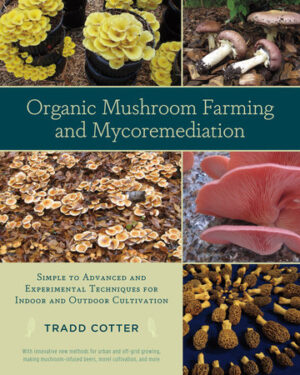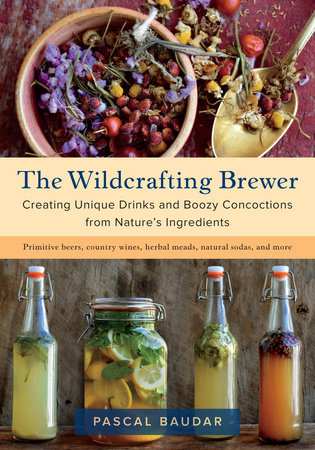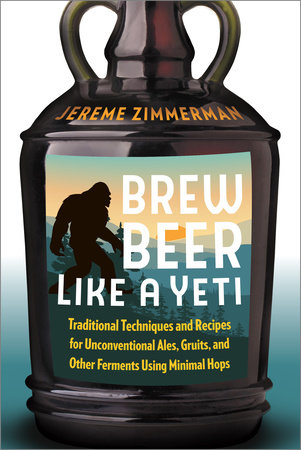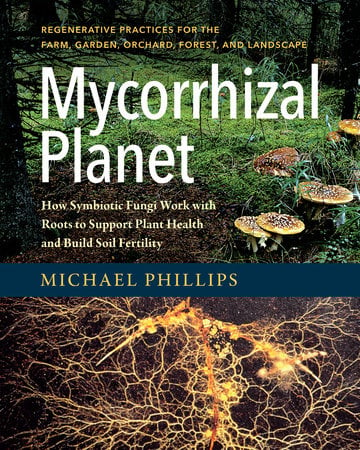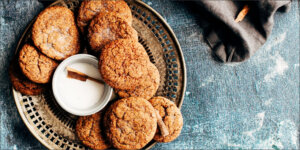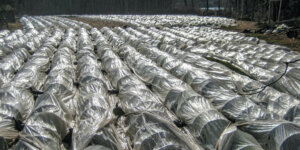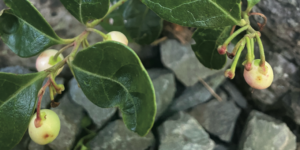Brew Outside the Box: Making Mushroom-Infused Beer
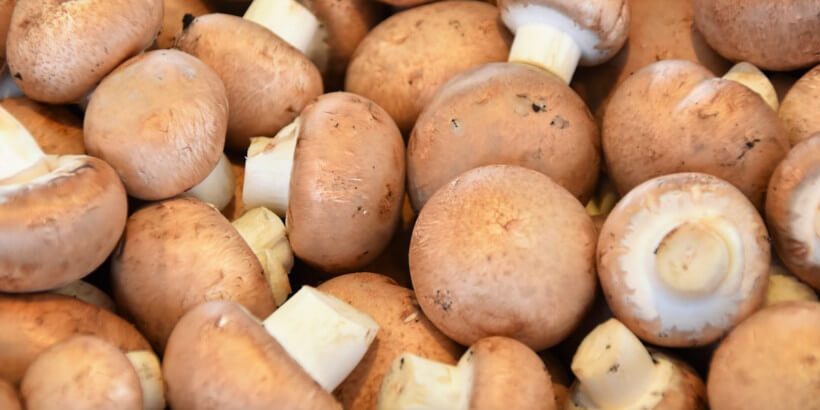
When thinking about drinking a nice cold beer, the flavor of mushrooms doesn’t exactly spring to mind. For the adventurous brewer – and drinker – infusing mushrooms into brews is a great way to combine the medicinal benefits of fungi with one of the world’s most consumed beverages. The best part? You can grow mushrooms and brew beer right in your home year-round.
The following excerpt is from Organic Mushroom Farming and Mycoremediation by Tradd Cotter. It has been adapted for the web.
(Photography courtesy of Tradd and Olga Cotter unless otherwise noted.)
Choosing a Mushroom
There are a few factors to consider before choosing the species—aroma, medicinal properties, nutritional properties, bitterness values, and cost. Modifying any of these factors could impact the others, so experiment on a small scale before producing large batches. Availability is an important factor and for wild mushrooms will vary by season. In fact, for some mushrooms that are rare or endangered, like the agarikon (Laricifomes officinalis), cultivation may be your only option for procuring sufficient quantities.
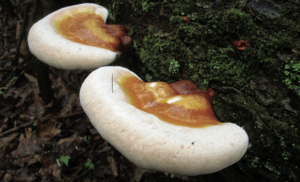
Hemlock reishi (Ganoderma tsugae) is a commonly used medicinal mushroom typically harvested from higher elevations. For your beer production, you can either hunt for these mushrooms or collect, clone, and cultivate them on conifer stumps outdoors or on sawdust formulas indoors.
Flavor
Much like hops, mushrooms can provide preliminary and lingering flavors when they hit your palate. Start off by adding small amounts of mushrooms or extracts to small batches of beer, taking into account that some types of beer can take several weeks to months to mature and fully develop. You can then make a judgment call as to how much mushroom to use with a larger volume of beer. Experiment with the kinds of mushroom you add, the form you use (fresh, dried, or powdered), the quantity, and at what stage you add it to determine the flavor you like for the kind of beer you are brewing.
Aroma
Pouring your beer into a glass is the only way to really appreciate the aroma, since your nose is, shall we say, strategically positioned, and when you drink, you taste the beer and smell its aromas simultaneously. This synching magnifies the experience.
Many mushrooms, such as birch polypore, contain vibrantly aromatic essential oils that mix and bind with other oily molecules present in hops. When you’re considering which mushrooms to use with your brew, think of the impact aroma will have on your drinking experience. You may wish to choose mushrooms that have a pungency and sweetness for brown ales and lagers, or savory and hearty species for darker brews such as stouts.
Medicinal Properties
The reason I started brewing mushrooms and beer together was to infuse the medicinal properties of mushrooms such as reishi and shiitake into a beverage that tastes good, has high market demand, and stores the medicinal compounds safely for years. I also later found beer to be an easy delivery system for extracts—and a little more interesting than just taking the extracts themselves.
I do not condone massive consumption of mushroom-infused beer to “get your medicine.” Use moderation, not only because you’re drinking an alcoholic beverage, but also because taking any medicinal mushroom continuously for too long, just like with any food or medicinal product, can have negative effects. Although the effect will depend on how much or how little mushroom powder or extract you add to your beer, I recommend drinking a bottle of mycobrew on a weekly, not daily, basis, as well as alternating recipes so that you are exposed to different properties from different mushrooms. If you are looking for a particular medicinal effect, such as anti-inflammatory actions to relieve the pain associated with arthritis, observe how your body responds to the different formulas, noting any positive or negative reactions. And try the mushrooms or extracts themselves, without the beer, to see if they work better for you on their own.
Bitterness Values
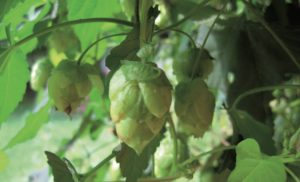
Fresh hop cones fruiting in our garden. I purchased a few small rhizomes and now have a thriving, organic hops garden for my personal use.
As you likely know, hops are added to beer to provide a bitterness that counterbalances the sweetness of malt. Mushrooms also vary in their bitterness; some mushrooms, such as many polypores, are very “hoppy” and are typically used not only for their medicinal compounds but also to impart a controlled bitterness to the beer. Wild mushrooms such as Tylopilus spp. are extremely bitter and should be used and experimented with sparingly.
The best way to test an edible mushroom’s bitterness is to chew on a fresh one. Assuming that you have correctly identified the mushroom in question as safe, bite or chip off a small chunk and start chewing. Allow a good sixty seconds before calculating the bitterness. Keep chewing, occasionally swallowing the juices, but do not swallow or spit out the piece. Note the initial and lingering qualities of bitterness, or lack of, with each species you try.
Hops are experiencing a spike in disease problems in commercial production fields, encouraging growers to spray pesticides and eventually likely impacting the price of beer. Breeding new hops varieties that are resistant to pests and diseases, along with using beneficial insects, is improving yields at organic farms, but the exploding worldwide demand, due to the proliferation of microbreweries and popularity of homebrewing, has hops growers fighting to keep up. This being the case, we can potentially develop a strategy to substitute some hops with specific mushrooms, partially or entirely.
Cost
The key to a great beer recipe is that it is not only simple but affordable too. The mushrooms you add are a key part of this, so use them efficiently and effectively. Don’t just pour a slurry of freshly blended shiitake mushrooms directly into your wort or finished beer and expect an award-winning brew. To minimize costs, use powdered mushrooms or an extract. You will use substantially less to achieve the same end product than you would with larger pieces in bulk form.
Mushroom-Infused Beer Recipes
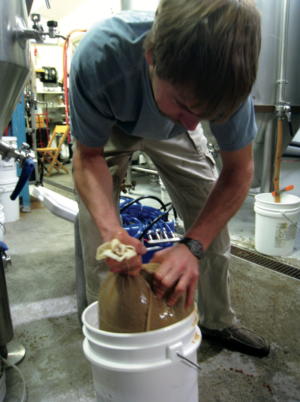
T. J. Daly, the head brewer at Smuggler Joe’s in Telluride, Colorado, strains a batch of medicinal mushroom extracts into a sanitized bucket to remove the grain solids before adding them to the kegs. The director of the festival, Scott Koch, helped design the formula and assisted with the brewing.
Below you’ll find some basic beer recipes that incorporate mushrooms. Each recipe is sized to make 5 gallons of beer. However, given the broad range of ingredients available to homebrewers, you don’t have to limit yourself to the ingredients you see here. You can modify any existing recipe. Just be sure to formulate your beer to balance sweetness and bitterness. And consider making it a specialty regional beverage that incorporates local and organically grown ingredients. Have fun making your first mushroom beer, and “hopfully” many more!
Turkey Tail Ale
A golden pale ale with turkey tail (Trametes versicolor)
- 6 pounds extra-light malted grain
- 4 ounces fresh or 2 ounces dried turkey tail mushrooms
- 1 ounce hops
- Ale yeast
Iceman Amber
An amber ale with birch polypore (Piptoporus betulinus) and amadou (Fomes fomentarius)
- 6 pounds extra-light malted grain
- 1 pound amber malt
- 12 ounces carrot juice (preferably organic)
- 4 ounces fresh or 2 ounces dried birch polypore mushrooms
- 4 ounces fresh or 2 ounces dried amadou mushrooms
- 1 ounce hops
- Ale yeast
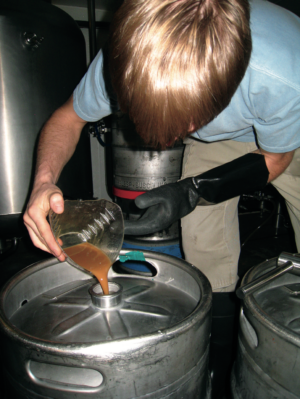
T. J. doses each keg with a precalculated amount of extract to ensure that every pint has a certain dose of targeted medicinal compounds. This blend was from reishi (Ganoderma spp.), birch polypore (Piptoporus betulinus), and turkey tail (Trametes versicolor).
Reishi Red
A natural red lager with reishi (Ganoderma spp.)
- 6 pounds extra light malted grain
- 1 pound amber malt
- 12 ounces red beet juice (preferably organic)
- 4 ounces fresh or 2 ounces dried reishi mushrooms
- 1 ounce hops
- Ale yeast
Agarikon Stout
A dark, earthy brew with agarikon (Laricifomes officinalis, Fomitopsis officinalis)
- 1 pound chocolate malted grain
- 1 pound crystal malted grain
- 5 pounds pale malted grain
- 2 ounces liquid agarikon mushroom extract (from colonized grain)
- 1 ounce hops
- Trappist yeast
Note: Agarikon is endangered and should not be harvested in the wild, but it is a powerful medicinal mushroom worthy of a stout beer. Since this mushroom cannot be cultivated in large quantities and the mycelium is slow to grow, the best option for this recipe is to allow myceliated cakes to supercolonize over the course of several months, until they are thick with biomass, and then prepare an extract from them.
Recommended Reads
Recent Articles
These snacks might be too darn cute to take a bite of! Brighten up snack time this winter using fruits and veggies we all know and love.
Read MoreWant to grow year-round, but a greenhouse feels like a big investment? When it comes to cost and flexibility, low tunnels are the all-around winners.
Read MoreWintergreen is the stunning evergreen groundcover that’s a game-changer for your garden! It’s cherished for its aromatic leaves, vibrant fall color & bright berries.
Read More

